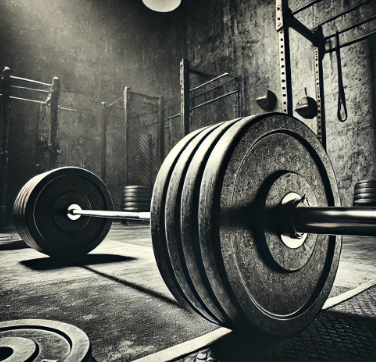How To Build Big Arms Using Progressive Overload
Published By GainzTracker, 25th September 2024

Building Bigger Arms with Progressive Overload
Introduction
Building bigger arms is a common goal for many fitness enthusiasts. To achieve significant muscle growth in your biceps and triceps, progressive overload is key. This principle involves gradually increasing the demands on your muscles to stimulate growth. In this article, we'll explore how you can apply progressive overload to your arm workouts to achieve greater size and strength.
The Role of Progressive Overload in Arm Growth
Progressive overload is a strategic approach to ensure your arms continuously grow by increasing the stimulus over time. Whether you focus on adding weight, increasing reps, or introducing more challenging exercises, the goal is to make your muscles work harder than they did before. For bigger arms, you’ll need to target both the biceps and triceps effectively.
- Weight: Increase the weight you use in key arm exercises like curls and tricep extensions.
- Repetitions: Gradually increase the number of repetitions you can perform while maintaining good form.
- Sets: Add additional sets to further challenge your arm muscles.
- Intensity: Incorporate advanced training techniques like drop sets, supersets, or rest-pause sets to increase intensity.
Key Exercises for Bigger Arms
- Barbell Curls: A classic exercise for targeting the biceps. Focus on adding weight gradually while keeping your form strict.
- Tricep Dips: Dips are excellent for building tricep mass. Aim to increase the number of reps or add weight using a dip belt.
- Hammer Curls: This variation targets the brachialis, an often-overlooked muscle that helps create thicker arms.
- Overhead Tricep Extension: Perfect for hitting the long head of the triceps, which is crucial for bigger arms.
Benefits of Progressive Overload for Arm Growth
- Increased Muscle Mass: Regularly increasing the workload on your arms forces the biceps and triceps to grow, resulting in larger, more defined muscles.
- Greater Strength: As you progressively overload your arm muscles, you’ll also build strength, allowing you to lift heavier weights over time.
- Balanced Development: Progressive overload ensures both your biceps and triceps develop evenly, giving your arms a well-rounded appearance.
- Prevention of Plateaus: By continually challenging your muscles, you avoid hitting plateaus, keeping your arm growth steady.
How to Apply Progressive Overload to Your Arm Workouts
- Set Clear Goals: Decide on specific targets for both bicep and tricep growth. For example, aim to add 5 pounds to your barbell curl or complete 3 more reps of tricep dips.
- Track Your Progress: Use a workout log or app to keep track of your exercises, weights, and reps. This allows you to monitor improvements over time.
- Gradual Increases: Avoid jumping in weight too quickly. Small, consistent increases (like adding 2.5 lbs every week) are more sustainable and effective for long-term growth.
- Use a Variety of Exercises: Switch between exercises that target different parts of the arm muscles, such as alternating between close-grip bench presses and skull crushers for triceps.
- Recover Properly: Recovery is crucial. Give your arms enough time to rest and grow before hitting them again in your next workout.
Conclusion
Building bigger arms requires dedication and a strategic approach. By applying progressive overload to your arm workouts, you can steadily increase the size and strength of your biceps and triceps. Stick to your plan, track your progress, and adjust your routine to ensure you continue challenging your muscles over time.
Call to Action
Ready to grow bigger arms? Start applying progressive overload to your workouts today and see the difference in your arm size and strength!
Disclaimer: The information provided in this article is for educational purposes only and is not intended as a substitute for professional medical advice, diagnosis, or treatment. Always consult with a healthcare provider before beginning any exercise program. Use caution when performing exercises to avoid injury.